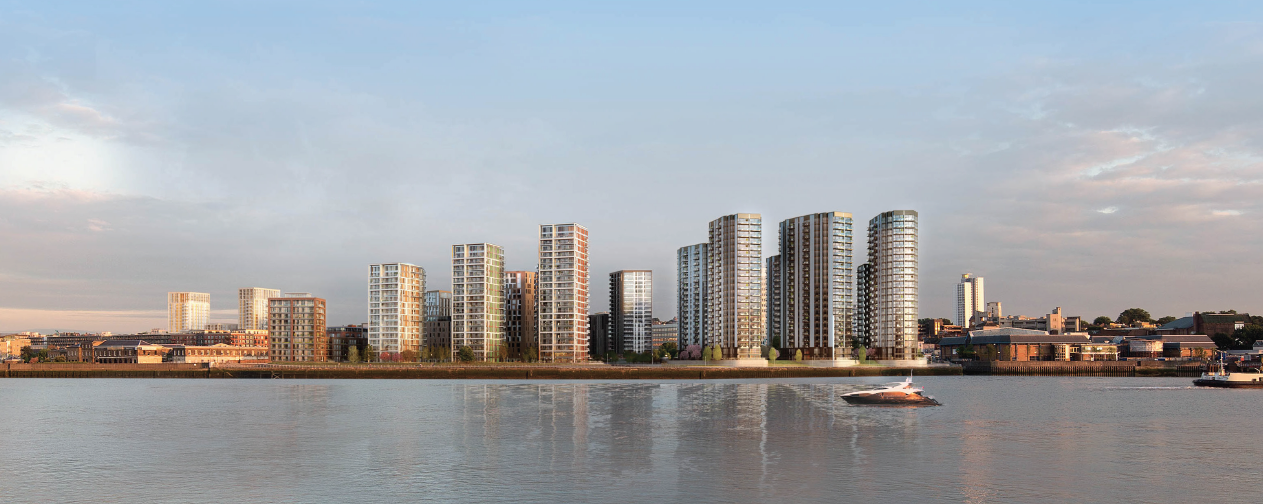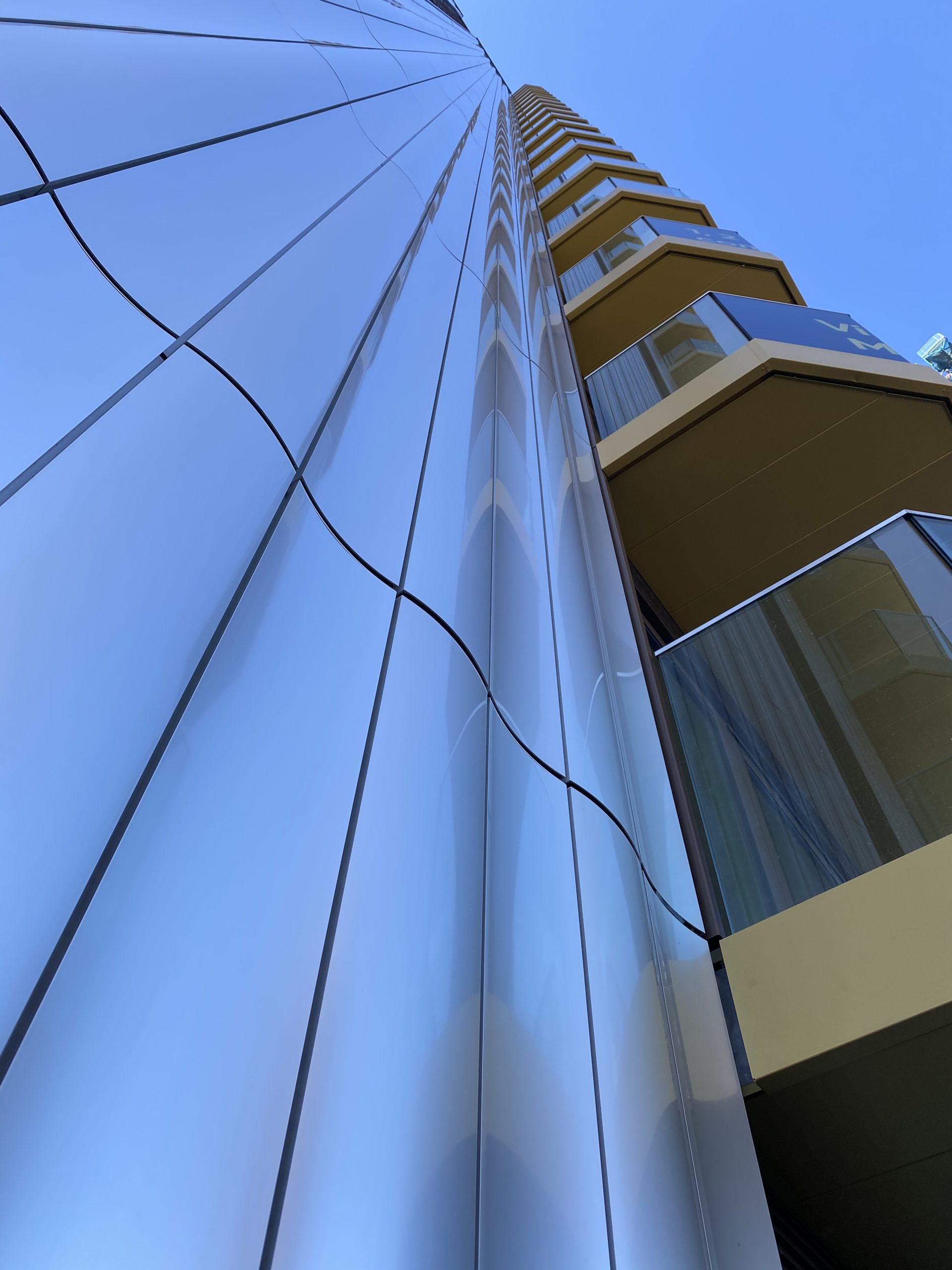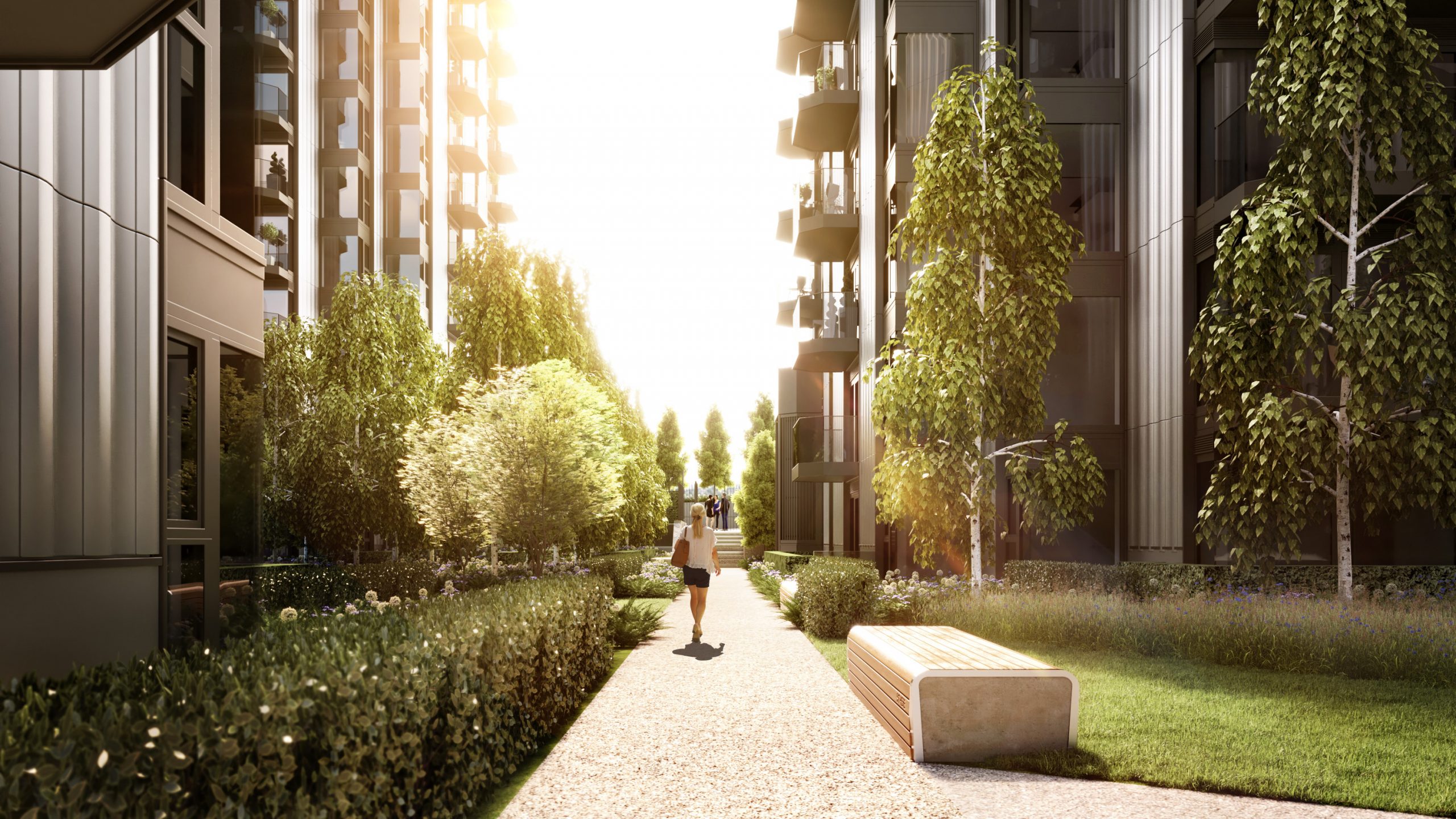We are delighted to be entering the third and final phase of the Royal Arsenal Riverside A Blocks development with Berkeley Homes East Thames – concluding the delivery of 768 luxury apartments and ground floor commercial/retail space.
We caught up with London Associate Director, Peter Severn, who has led the project from inception, to gain an honest and insightful look at what it means to create an effective working relationship – and our growth – within the residential sector.

Peter joined Bond Bryan back in 2007: hailing from Doncaster, on the doorstep of the Bond Bryan Sheffield Studio, Peter worked as an integral part of the technical delivery team at Bond Bryan’s Sheffield Studio before taking on the challenge of further establishing the London Studio in 2018.
Quickly settling into London as an Associate Director, Peter played a key part in managing and leading the Design Team for Phase 1 (and the latter Phase 2) of the Royal Arsenal Riverside development (A Blocks) for Berkeley Homes East Thames – alongside London Studio Director, Geoff Halliwell.
This relationship has, undoubtedly, gone from strength to strength, with Berkeley Homes becoming a key client of the London Studio and the wider practice – something exemplified with Bond Bryan being commissioned on a number of further projects with Berkeley Homes.
This relationship has also seen Peter lead on and undertake a Research and Development study into the use of volumetric construction on high-rise tower block schemes. The findings of this study have since been used to help shape a variety of MMC and Off-site solutions on several Berkeley Homes projects, that (in some instances) account for over 50% of construction being procured and manufactured off-site – as opposed to a more traditional construction route.
Now, as we enter the final phase of the Royal Arsenal Riverside A Blocks development, Peter is looking forward to the future and in helping to drive and grow our Bond Bryan Living brand.
Q: Peter, what is the key to growing such a strong relationship between Client and Architect?
A: Quality, reliability and good communication. A high quality of information, maintaining good communication at all levels and always being reliable, in terms of aligning yourself to your client’s goals – keeping them at the core of everything and sticking to them!
After we’d completed the first phase of the Royal Arsenal Riverside for Berkeley Homes East Thames, we knew their expectations and what they wanted from us as an Architect – so delivering the following phases has been easier and more efficient. Likewise, they also knew us and how we operated – hence it was easier for us to grow and strengthen our relationship together.

Q: When working with a client on a challenging project, how do you ensure the relationship stays good and enjoyable for both parties?
A: Constant communication – you’ve got to keep a constant stream of two-way communication going all the way through the project’s lifecycle. By doing this, you can minimise ‘surprises’ as much as practically possible.
If there are challenges to the project, or unexpected surprises throughout the process, you have to get them out in the open and deal with them as soon as possible – you can’t just sit on them and hope that they’ll disappear!
By doing this, and always keeping those communication channels open, you can create a culture of teamwork – resolving issues together and strengthening that relationship even more.


Q: Why do you think we’ve been so successful in growing our residential experience?
A: I think that, it’s because, as a Practice, we’ve got such great all-round experience from every other sector that we’ve worked in. In some cases, these other sectors and projects can be a lot more complex than the residential sector. The experience which we’ve gained from all of the other sectors that we work in means that we’re great at solving problems, at designing and delivering high-quality buildings, handling engagements with multiple stakeholders and dealing with confined and constrained sites. I feel like that this makes the residential sector a great fit for us – bringing our wider experience, and new ways of thinking, to yet another sector.
We’ve also got a really strong software infrastructure in place for residential work and delivering to BIM Level 2. We’ve developed bespoke software templates that are tailored towards residential and housing projects; this gives us “a leg up” and makes us more efficient in our working methodologies , so allowing us to concentrate on the most important aspect – coordination with the team!

Q: How do you envisage our residential experience growing in the coming years?
A: Our growth will come through the development of our Bond Bryan Living brand, which we’re always developing and adding to – cultivating our portfolio and upping the value that the Bond Bryan Living brand brings to the business.
It’ll also come from continuing to grow our relationships with our existing clients: nurturing the bonds between ourselves and our clients whilst also maintaining our reputation as a safe pair of hands and a trustworthy architecture practice. We value our existing clients more than anything – and that is reflected in the amount of repeat business which we undertake as a Practice.
As is always the case, we are also looking to forge new relationships with new clients too – giving us the opportunity to work on new and exciting projects, both in London and also nationwide. We have a lot to offer the sector and we are finding that our approach is extremely exciting to prospective clients.

Q: What initiatives do you think are important to the development of the housing sector?
A: Off-site construction and Modern Methods of Construction, or MMC, are clearly key to the future of the residential sector, but also to the wider construction industry as a whole. In some cases, looking to off-site methods of construction can be key to unlocking a particular site and turning a project from un-viable to viable.
We’ve done a lot of work and R&D into bringing MMC and off-site construction to residential, high-rise developments – both within London and nationwide; this builds on the excellent off-site/modular experience that we have in other sectors.
We have worked with specialist providers and manufacturers on individual off-site/MMC aspects such as bathroom pods, for example, but have also done extensive work into fully volumetric modular high-rise residential projects – working with specialist providers and other industry experts. Volumetric solutions and modular solutions have their place in the housing sector and it’s about finding the right site with the right client and establishing and developing the methodology early on in a project.
On a smaller scale, the development opportunities that the Air Space sector provides are exciting and could be a big part of growing the housing sector in densely-developed city centre locations. By unlocking the potential value of sites through utilising the air space above existing buildings, either through traditional or predominantly off-site construction methods, we can see significant growth in the air space sector – a concept that is especially pertinent within an urban setting such as London where development space is at a premium.

At Bond Bryan, we build relationships with our clients that last a lifetime; the fact that a significant number of our clients are repeat customers fills us with an immense sense of pride. We believe in the power of people, and that extends to the people we work with – it truly is more than design for us.
It’s essential for us to ensure that the driving force behind our sector experience and expertise – our people – are, not only knowledgeable of the methods of working in these sectors, but that they also appreciate the importance of creating long-lasting relationships with our clients; we don’t believe you can teach that – and that’s something we are really proud of in all of our people.

